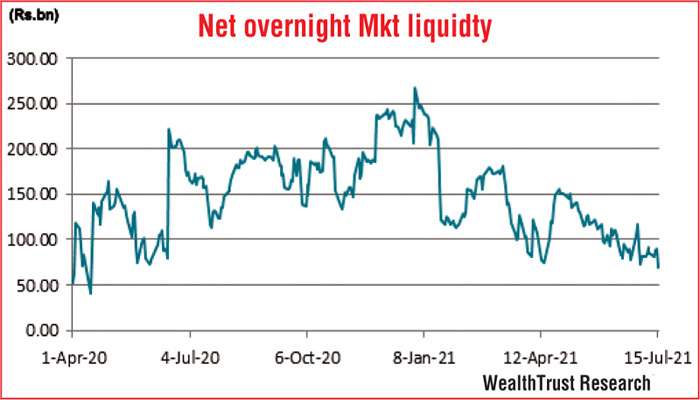Ueda Monitors Ripple Effects Of Increased Long-Term Bond Yields

Table of Contents
The Rise in Long-Term Bond Yields: Causes and Context
The recent increase in Japanese long-term government bond yields marks a pivotal moment in the country's economic history. For years, the BOJ maintained a policy of yield curve control (YCC), suppressing long-term interest rates to stimulate economic growth. However, this policy has been gradually adjusted, leading to a rise in yields.
-
Easing of Yield Curve Control (YCC) policy: The BOJ's decision to widen the acceptable range for 10-year government bond yields signifies a move away from its aggressive YCC policy. This subtle shift has had a significant impact on market sentiment.
-
Global inflationary pressures: Global inflation, fueled by factors such as supply chain disruptions and increased energy prices, has put pressure on central banks worldwide, including the BOJ, to reconsider their monetary policies. The rising inflation necessitates a re-evaluation of the ultra-loose monetary stance previously adopted.
-
Increased investor demand for higher returns: With inflation eroding the purchasing power of cash, investors are seeking higher returns on their investments. This increased demand for higher-yielding assets has contributed to the rise in long-term bond yields.
-
Potential weakening of the Yen: A weaker Yen can increase import costs and contribute to inflationary pressures, further influencing the BOJ's policy decisions and indirectly impacting bond yields.
The shift away from negative interest rates, a hallmark of the BOJ's previous monetary policy, has also played a crucial role. International influences, such as rising US interest rates, have also exerted pressure on Japanese bond yields, contributing to the overall upward trend. The interplay of these factors has created a complex economic landscape that demands careful navigation.
Impact on the Japanese Economy: A Multifaceted Analysis
The rise in long-term bond yields has far-reaching implications for the Japanese economy, both in the short-term and long-term.
-
Effect on corporate borrowing costs: Higher yields translate to increased borrowing costs for Japanese corporations, potentially hindering investment and economic growth. This could lead to reduced capital expenditure and slower expansion.
-
Implications for government debt: Japan carries a substantial level of government debt. Higher borrowing costs make servicing this debt more expensive, potentially straining public finances and limiting the government's ability to fund essential services.
-
Influence on consumer spending and investment: Increased borrowing costs can dampen consumer spending and investment as businesses and individuals become more cautious about taking on debt. This could lead to a slowdown in economic activity.
-
Potential impact on the housing market: Higher mortgage rates, a direct consequence of rising bond yields, could cool down the already slowing Japanese housing market, impacting construction activity and related industries.
The ripple effects extend across various sectors. The automotive industry, for example, might face increased costs for borrowing to finance expansion or new technologies. The potential for slower economic growth and decreased consumer spending is a significant concern.
BOJ's Response and Future Outlook: Navigating Uncertainty
The BOJ has responded to the rising yields with a combination of actions and communications.
-
Adjustments to monetary policy: While maintaining its commitment to achieving its price stability target, the BOJ has subtly adjusted its monetary policy, allowing for greater flexibility in managing bond yields.
-
Communication strategy with markets: Clear and consistent communication with financial markets is crucial to manage expectations and maintain market stability. The BOJ's communication strategy will play a vital role in shaping investor sentiment.
-
Potential for further interventions: The BOJ retains the capacity for further interventions in the bond market if necessary to maintain stability and control excessive volatility.
-
Challenges in balancing price stability and economic growth: The central bank faces the classic challenge of balancing price stability with sustainable economic growth. Raising interest rates too aggressively could stifle economic growth, while doing too little could exacerbate inflationary pressures.
Ueda's Role and Challenges
Governor Ueda's role in managing this situation is paramount. He must navigate a complex web of economic pressures and expectations.
-
His communication strategies: Clear and transparent communication is crucial to guiding market expectations and maintaining confidence.
-
His approach to balancing competing economic goals: Ueda faces the difficult task of balancing the need to control inflation with the need to support economic growth.
-
The pressure he faces from both domestic and international stakeholders: He must manage the expectations of domestic stakeholders while also considering the impact of global economic trends.
Navigating this complex economic landscape presents significant challenges for Governor Ueda. His decisions will have profound implications for the Japanese economy and its global standing.
Conclusion
The increase in Japanese long-term bond yields has created significant ripple effects throughout the Japanese economy. The causes are multifaceted, encompassing the BOJ's gradual shift away from YCC, global inflationary pressures, increased investor demand for higher returns, and a potentially weakening Yen. This has led to increased borrowing costs for corporations, implications for government debt, potential dampening of consumer spending and investment, and a possible cooling of the housing market. Governor Ueda's response, balancing price stability and economic growth while managing market expectations, will be critical in shaping the future economic trajectory of Japan.
Call to Action: Stay informed about the evolving situation regarding increased long-term bond yields in Japan. Continue to monitor Governor Ueda's actions and their implications for the Japanese economy. Regularly check reputable financial news sources for updates on the Japanese economy and monetary policy to understand the long-term implications of these shifts. Understanding the dynamics of long-term bond yields is crucial for informed investment decisions and for understanding the broader global economic landscape.

Featured Posts
-
 6 Things The Harry Potter Remake Needs To Get Right
May 29, 2025
6 Things The Harry Potter Remake Needs To Get Right
May 29, 2025 -
 Pokemon Tcg Game Stop Imposes One Per Customer Limit
May 29, 2025
Pokemon Tcg Game Stop Imposes One Per Customer Limit
May 29, 2025 -
 Hbos Harry Potter Show A Commitment To Inclusivity Excluding Rowlings Views
May 29, 2025
Hbos Harry Potter Show A Commitment To Inclusivity Excluding Rowlings Views
May 29, 2025 -
 8 Year Old Girl Injured In South Seattle Drive By Shooting
May 29, 2025
8 Year Old Girl Injured In South Seattle Drive By Shooting
May 29, 2025 -
 Inter Rent Reit Accepts Takeover Bid From Executive Chair And Sovereign Wealth Fund
May 29, 2025
Inter Rent Reit Accepts Takeover Bid From Executive Chair And Sovereign Wealth Fund
May 29, 2025
Latest Posts
-
 2025 Love Moto Stop Cancer Online Auction Faqs
May 31, 2025
2025 Love Moto Stop Cancer Online Auction Faqs
May 31, 2025 -
 2025 Pro Motocross Championship What To Expect
May 31, 2025
2025 Pro Motocross Championship What To Expect
May 31, 2025 -
 Dont Miss Out 2025 Love Moto Stop Cancer Online Auction
May 31, 2025
Dont Miss Out 2025 Love Moto Stop Cancer Online Auction
May 31, 2025 -
 Supercross Is Back The Salt Lake City Race Is Coming Soon
May 31, 2025
Supercross Is Back The Salt Lake City Race Is Coming Soon
May 31, 2025 -
 Pro Motocross 2025 Riders Races And Predictions
May 31, 2025
Pro Motocross 2025 Riders Races And Predictions
May 31, 2025
